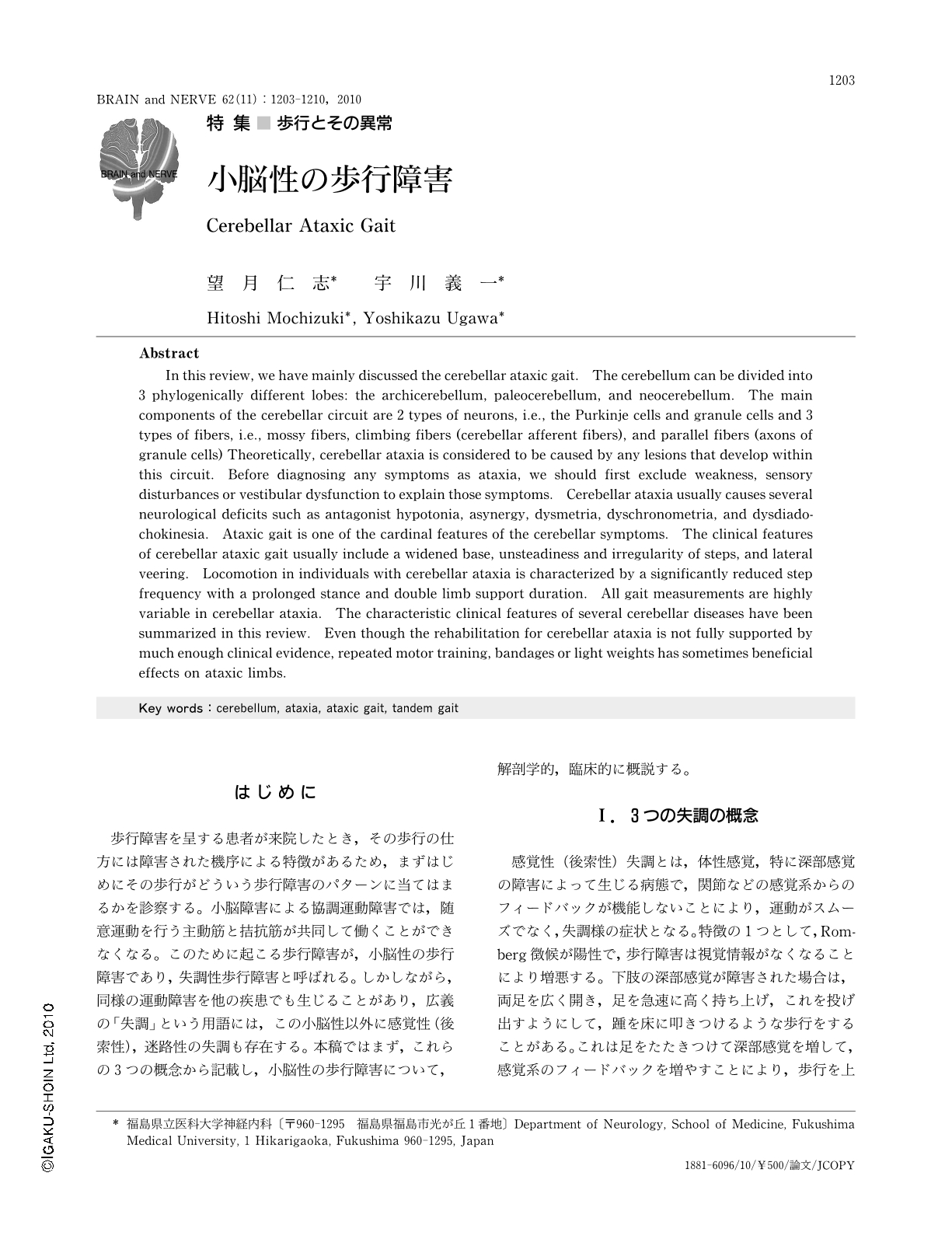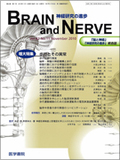Japanese
English
- 有料閲覧
- Abstract 文献概要
- 1ページ目 Look Inside
- 参考文献 Reference
はじめに
歩行障害を呈する患者が来院したとき,その歩行の仕方には障害された機序による特徴があるため,まずはじめにその歩行がどういう歩行障害のパターンに当てはまるかを診察する。小脳障害による協調運動障害では,随意運動を行う主動筋と拮抗筋が共同して働くことができなくなる。このために起こる歩行障害が,小脳性の歩行障害であり,失調性歩行障害と呼ばれる。しかしながら,同様の運動障害を他の疾患でも生じることがあり,広義の「失調」という用語には,この小脳性以外に感覚性(後索性),迷路性の失調も存在する。本稿ではまず,これらの3つの概念から記載し,小脳性の歩行障害について,解剖学的,臨床的に概説する。
Abstract
In this review,we have mainly discussed the cerebellar ataxic gait. The cerebellum can be divided into 3 phylogenically different lobes: the archicerebellum,paleocerebellum,and neocerebellum. The main components of the cerebellar circuit are 2 types of neurons,i.e.,the Purkinje cells and granule cells and 3 types of fibers,i.e.,mossy fibers,climbing fibers (cerebellar afferent fibers),and parallel fibers (axons of granule cells) Theoretically,cerebellar ataxia is considered to be caused by any lesions that develop within this circuit. Before diagnosing any symptoms as ataxia,we should first exclude weakness,sensory disturbances or vestibular dysfunction to explain those symptoms. Cerebellar ataxia usually causes several neurological deficits such as antagonist hypotonia,asynergy,dysmetria,dyschronometria,and dysdiadochokinesia. Ataxic gait is one of the cardinal features of the cerebellar symptoms. The clinical features of cerebellar ataxic gait usually include a widened base,unsteadiness and irregularity of steps,and lateral veering. Locomotion in individuals with cerebellar ataxia is characterized by a significantly reduced step frequency with a prolonged stance and double limb support duration. All gait measurements are highly variable in cerebellar ataxia. The characteristic clinical features of several cerebellar diseases have been summarized in this review. Even though the rehabilitation for cerebellar ataxia is not fully supported by much enough clinical evidence,repeated motor training,bandages or light weights has sometimes beneficial effects on ataxic limbs.

Copyright © 2010, Igaku-Shoin Ltd. All rights reserved.


